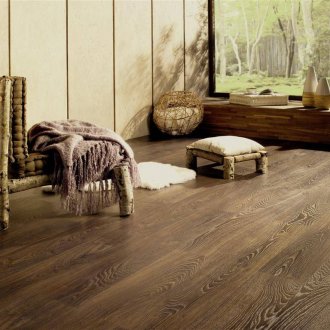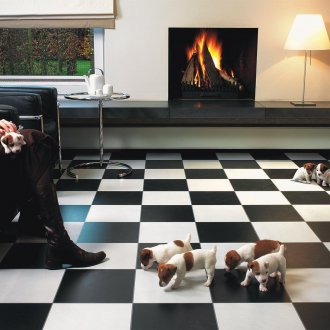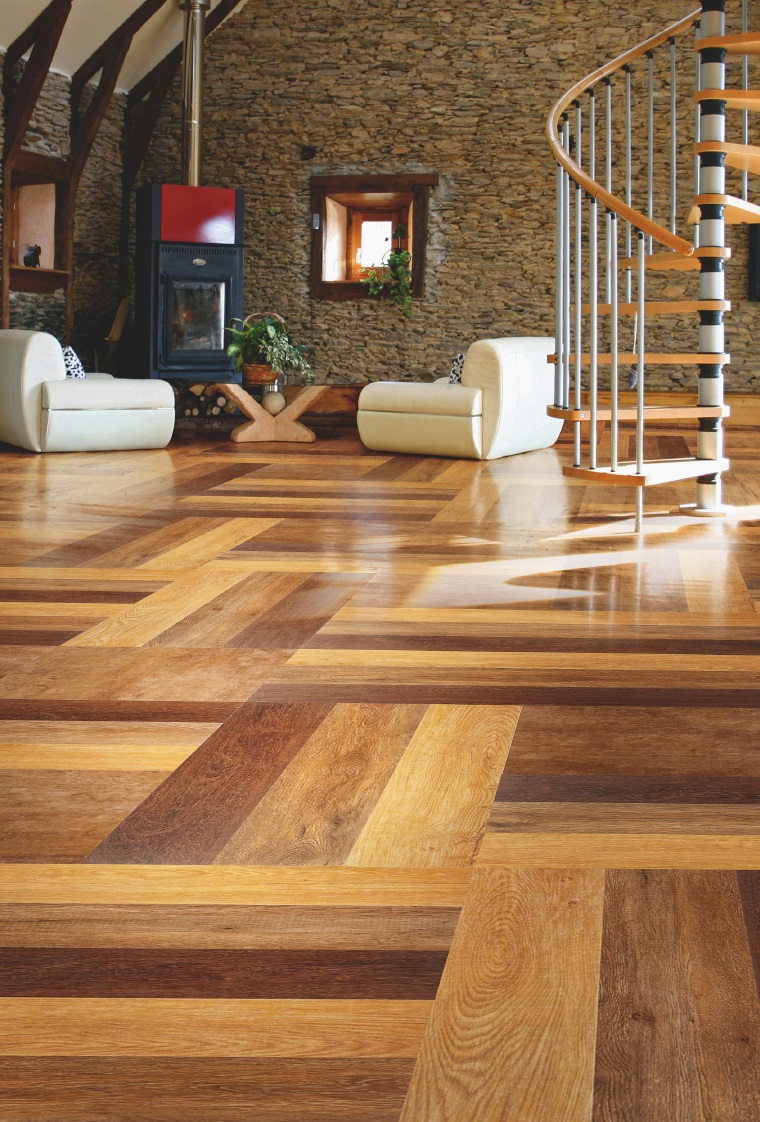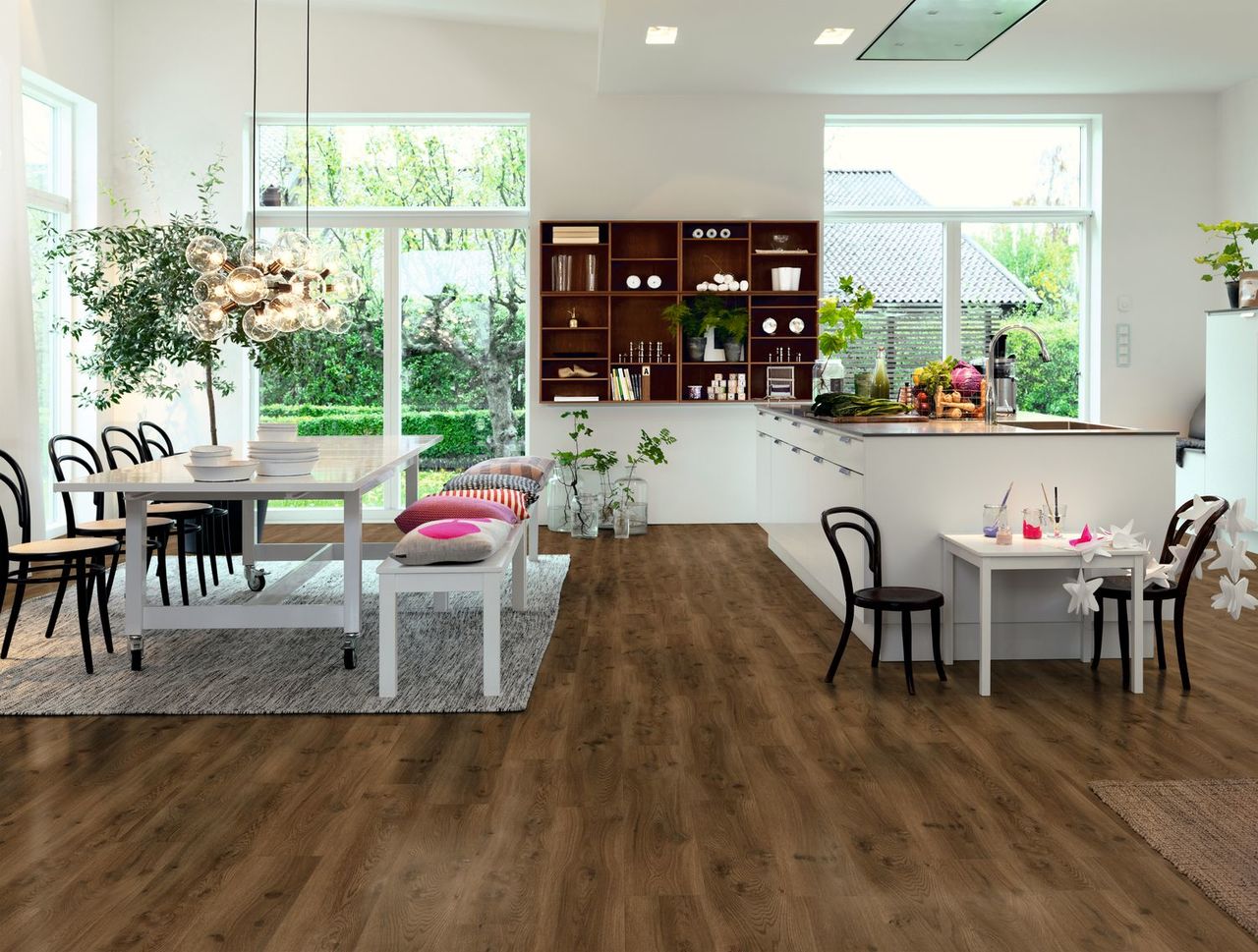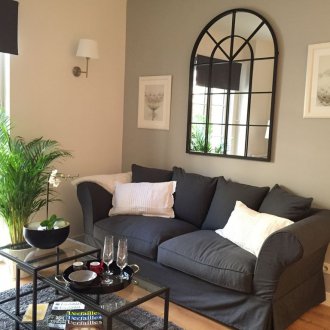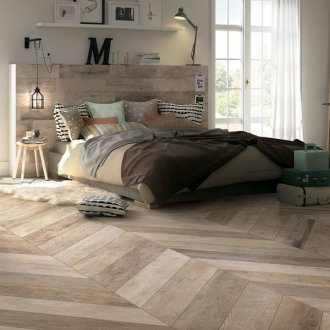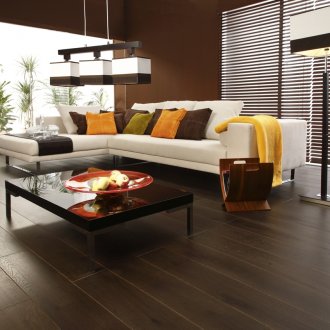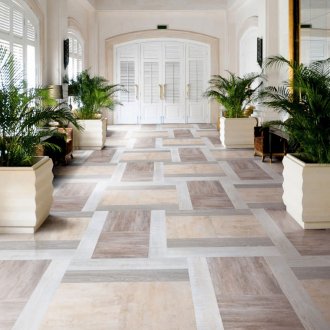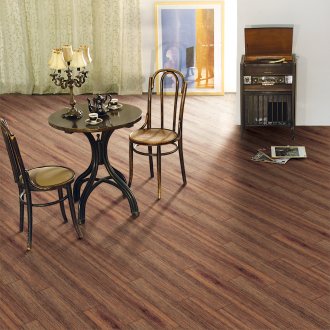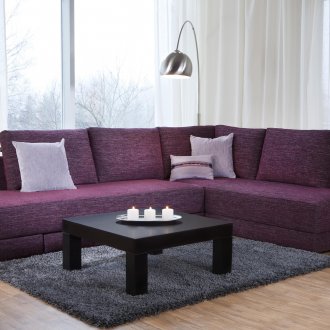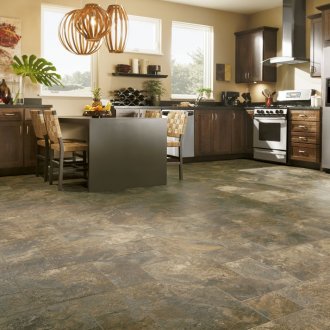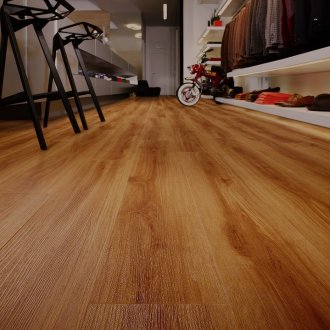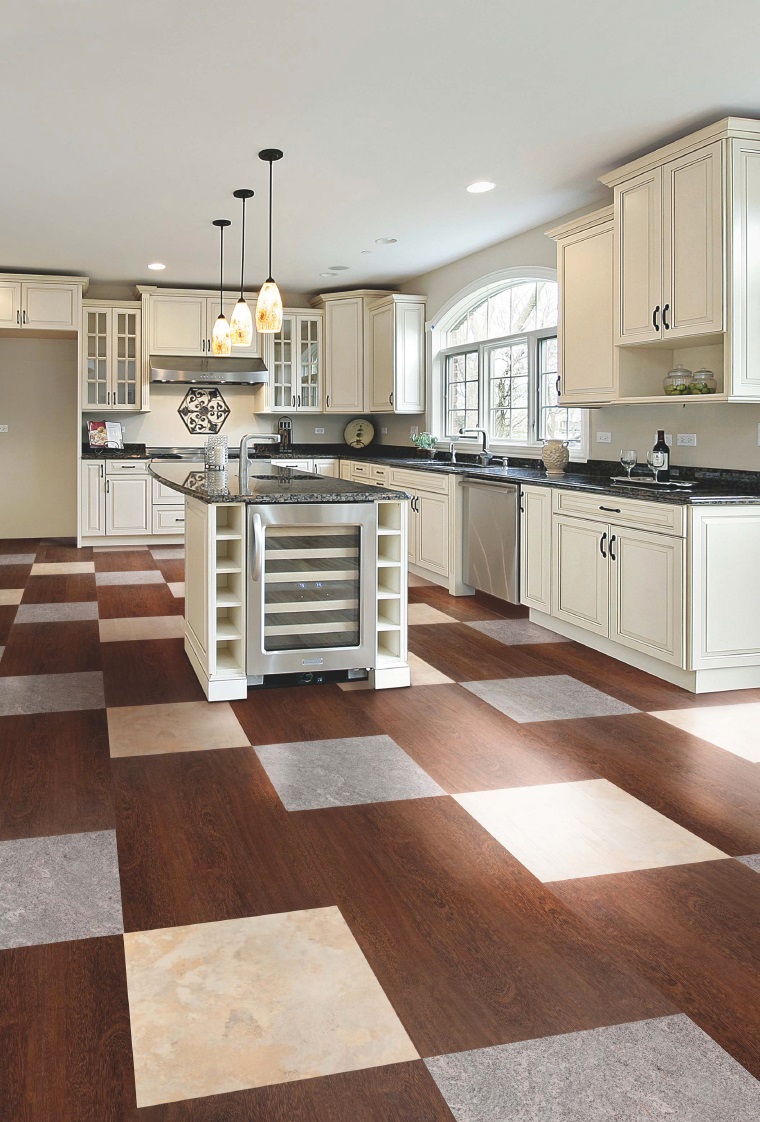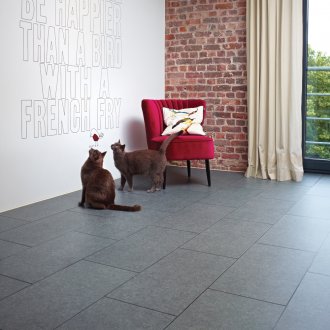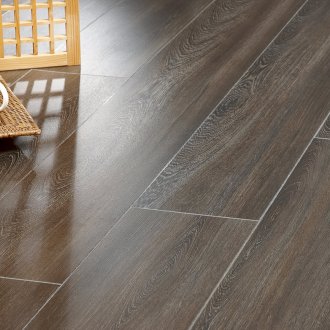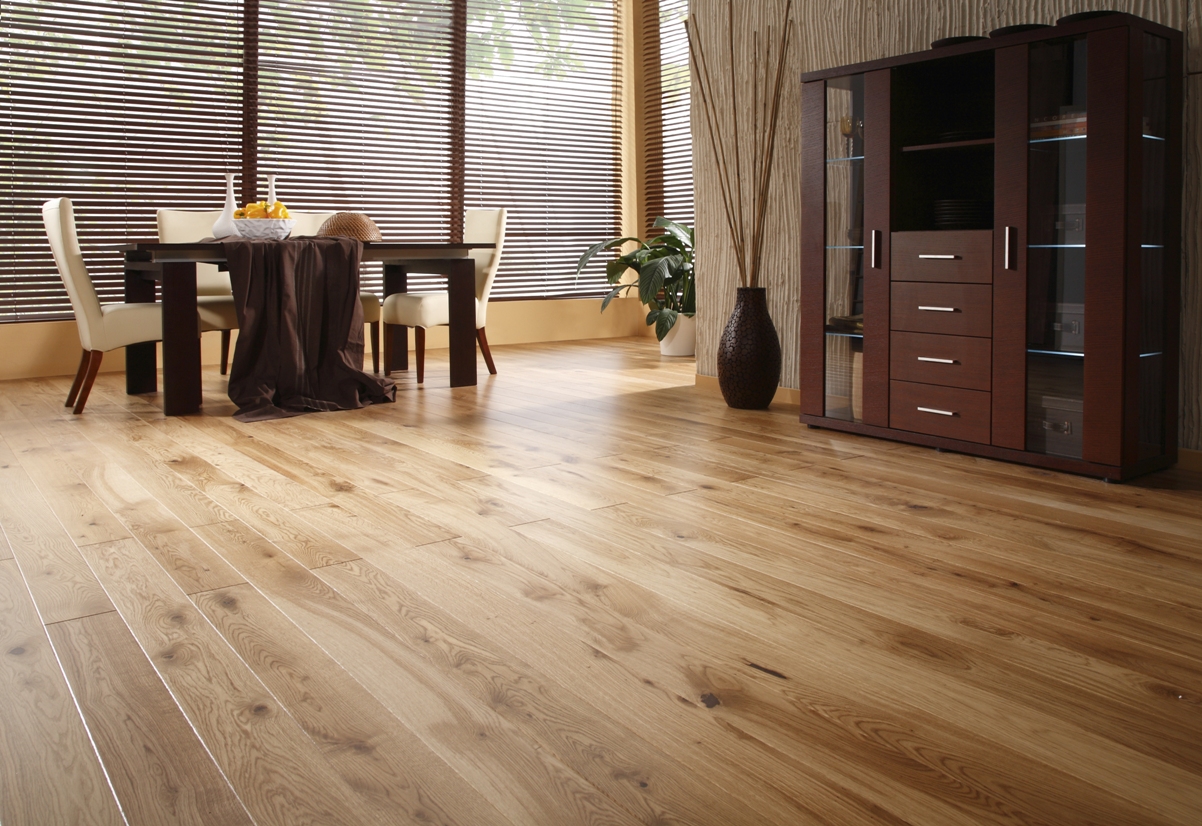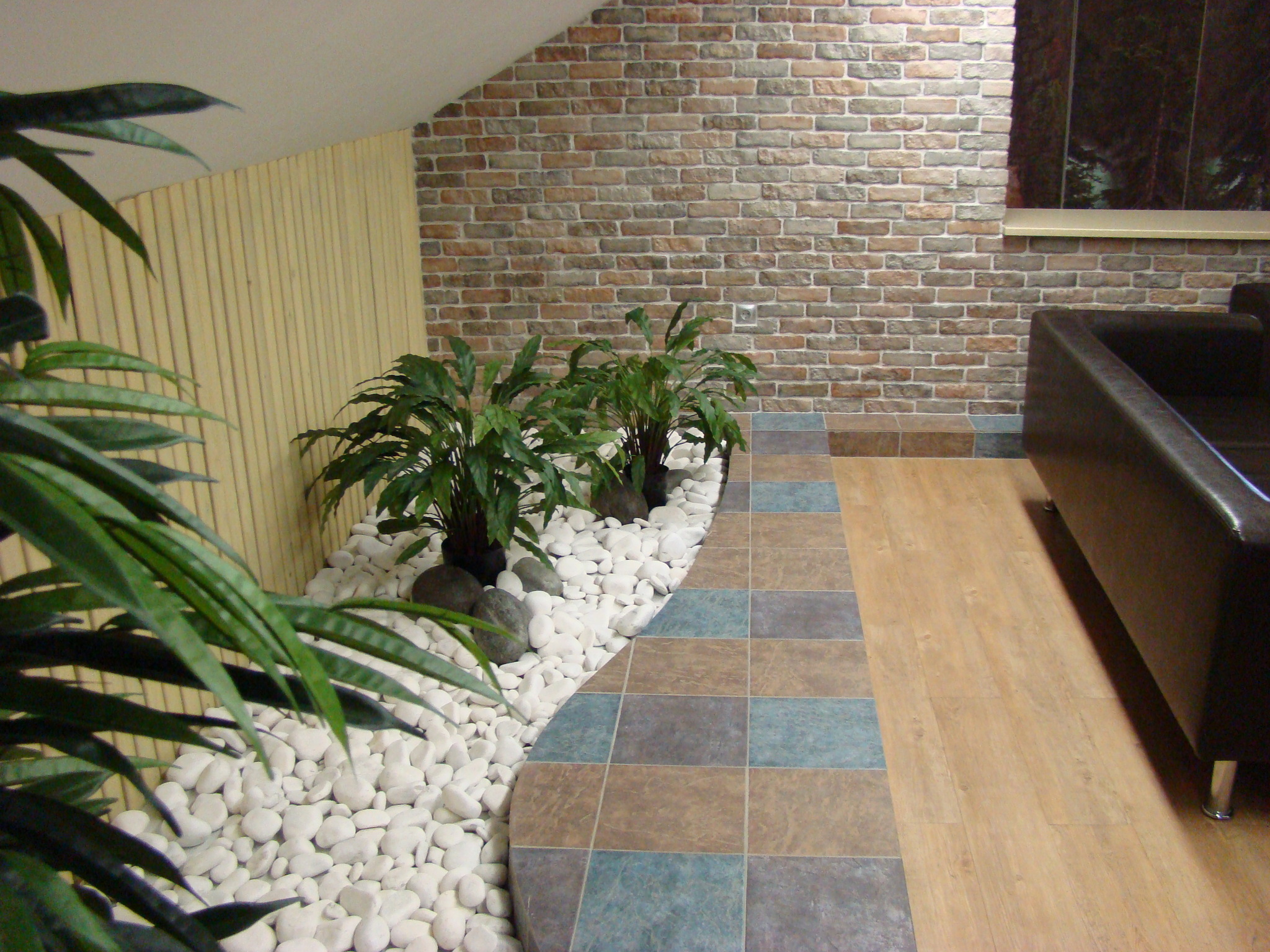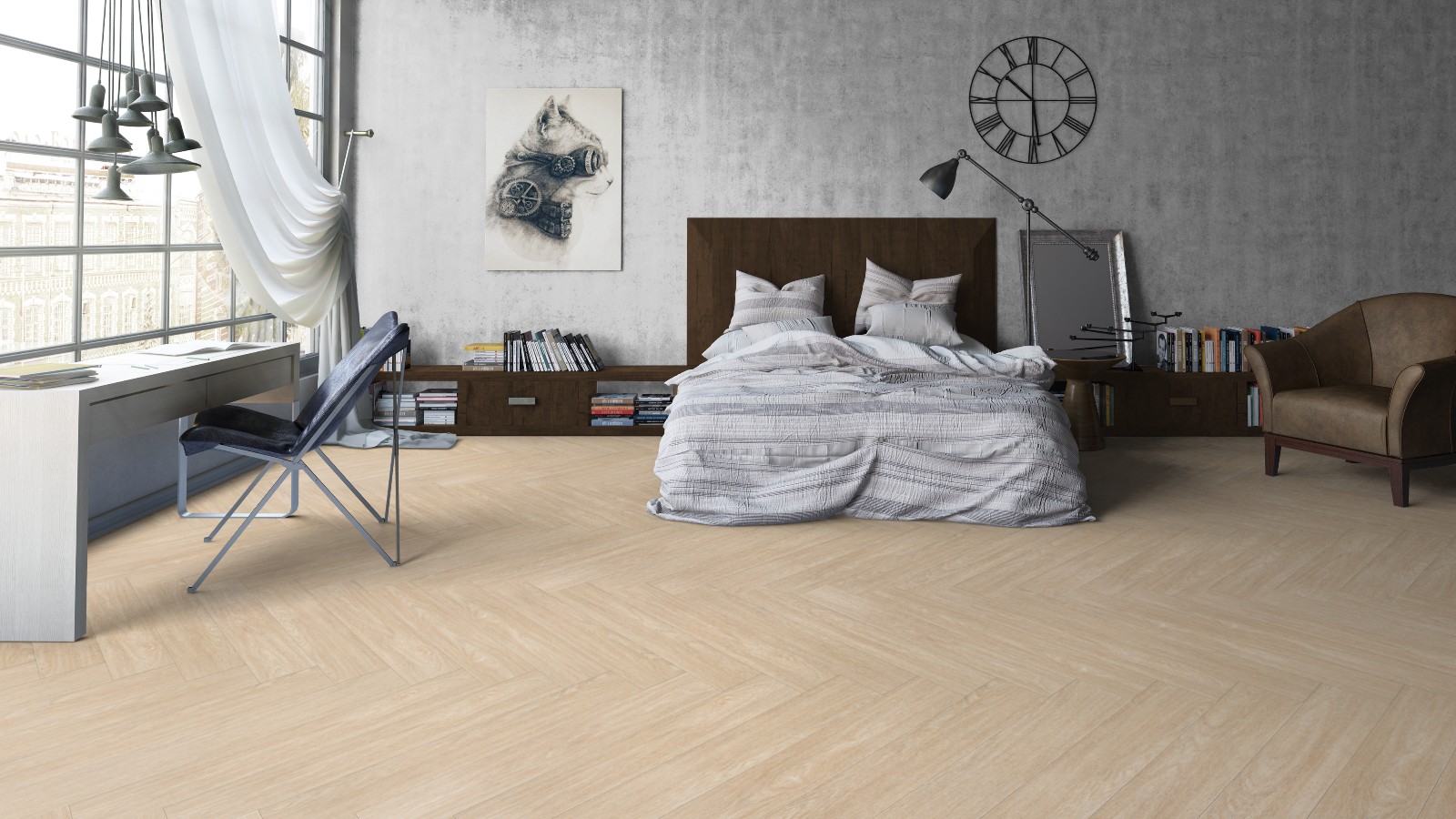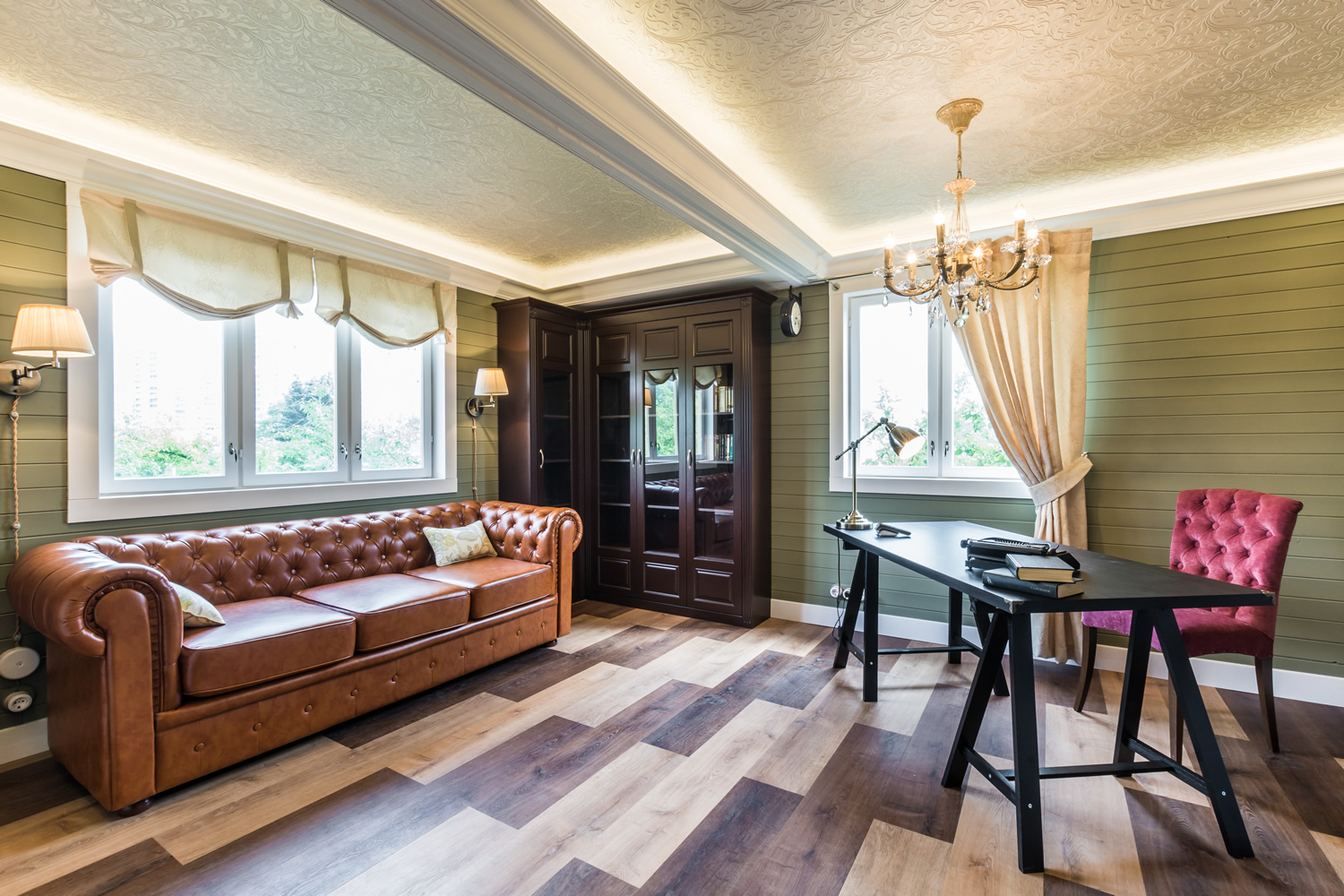Quartz vinyl tile in the interior: recommendations for selection and design (25 photos)
Content
When choosing a tile for floor and wall, you often encounter many problems: the quality of the material, durability, price. For this reason, going to the store of finishing materials, you immediately start looking for the latest innovations in the world of facing material as the most suitable for the requirements.
The latest know-how among finishing materials is quartz vinyl tile, in its intended purpose it is a facing material for floor and walls. In addition, it has a fairly wide scope of application, it can be used for finishing surfaces of bars, night discos, in shops, in the office, in the apartment and other rooms, as well as in rooms with high humidity, for example, in the bathroom.
Quartz vinyl tiles are laid both on a wooden floor and on a concrete surface.
The surface pattern of the tile allows you to simulate various types of design: marble walls, wooden floors and other ceramic coatings. The structure of quartz vinyl tiles is based on river sand and shell rock. Both of these materials make up to seventy percent of the total volume, PVC is used as a bonding element.
The use of river sand in the structure of the tile is due to the fact that it lends itself to more thorough cleaning from impurities. In fact, a mixture of PVC, river sand, shell rock form a heterogeneous material consisting of several layers. To give higher strength, the tile is covered with fiberglass, after which the resulting composition is subjected to hot pressing to form a single whole material.
Positive aspects of quartz vinyl tile
Like all facing materials, quartz vinyl tiles have their pros and cons. The positive side of the tile can be called its unique hardness and wear resistance. During heat treatment, the material is compressed so that it can withstand the pressure of the mass of the car. The maximum service life of the material is twenty-five years.
The second positive quality is the use of additional polyvinyl chloride material.
Thanks to the chemical compound, the tile feels warmer to the touch, i.e. there is virtually no sense of coldness from the floor.
The third positive side of the product is its environmental friendliness. As mentioned earlier, the structure of the tile includes natural natural components. The used chemical substance polyvinyl chloride is a safe material, and examples of its use in the manufacture of bags for food products, in children's toys, in medical equipment can be cited as evidence of its harmlessness. Due to the harmless materials, harmful chemical compounds do not stand out from the tile even under the influence of high temperature.
The fourth positive factor of quartz vinyl tile is resistance to any chemical compounds, as well as fire resistance: the tile in its composition does not contribute to the spread of fire, when exposed to an open flame it does not emit toxins. Such positive qualities as fire protection and a long service life are quite possible to equate to the advantages of the product.
In addition to the above, with sharp changes in temperature in the room, the laying of quartz vinyl tiles is not violated by the appearance of gaps between the laid elements. All this allows laying tiles in rooms with a constantly changing temperature regime, as well as close to objects built into the interior of the room, such as plumbing, columns, walls, etc.
The most important advantage of a tile is its interchangeability, i.e. damaged tiles are easy to remove and install new. Also, quartz vinyl tile does not conduct electric current, which allows it to be used on top of electrical wires.
Disadvantages of Quartz Vinyl Tile
Among the shortcomings during operation and installation, the following can be distinguished:
- It is not recommended to lay the tile on an open concrete surface without heating, because it becomes colder.
- Cement mortar cannot be used for gluing tiles; special glue is used for these purposes.
- Before laying the tile, the base of the surface requires perfect evenness, as due to the small thickness of the material all surface drops will be visible.
- During operation, gaps may form between the tiles.
Laying Quartz Vinyl Tiles
Laying tiles even for an inexperienced specialist does not cause difficulties, installation is carried out by gluing or joining with a lock. The rest of the technology coincides with the laying of ceramic tiles.
First you need to prepare the flooring. The surface is cleaned of various kinds of contaminants, the curvature of the floor should also be aligned (remember that quartz vinyl floor tiles do not like swings, they are immediately visible when installing the tile).
It is possible to lay the tile on various types of surfaces: concrete, wood, tile, the main thing is that the surface is cleaned (it can also be treated with a primer) and dry at the time of installation.
To level the floor, you can resort to the following method: if the floor is concrete, pour a self-leveling solution, then while it is still slightly dried up, wipe the screed with a plaster grater to give smoothness.
The wooden coating is covered with sheets of plywood or chipboard. Then polish the joints of the sheets so that there are no differences.
Having prepared the surface, a breakdown of the room should be made, the main thing is to determine the center of the room. The breakdown is made into four equal sectors, since installation will subsequently be carried out on them.
According to the laying method, two types of tile installation can be distinguished: glue and glueless (the latter is used if quartz vinyl tiles with a castle connection). The tile locking system is similar to the laminate system. The elements are docked with locks until a click is heard. Tiles with such a laying system have several advantages; they can be easily dismantled when a defect occurs and reinstalled.
When laying ordinary tiles use adhesive, contact or dispersion. It is applied to the floor in a fan-like manner, evenly, from the far corner to the door. After one layer is applied, a lining strip is laid, subsequently another layer of glue is applied. The second layer is given time to dry for about ten minutes, the glue should begin to set.
The process of laying tiles is carried out from the center of the room and diverges on the sides. The tile is laid on its own. The laid section of the tile is rolled along the top with a roller. It is necessary to ensure that there are no gaps between the tiles, in the future they can increase. After that, the excess glue that protrudes onto the surface should be removed, they are easily erased with ethyl alcohol.
After laying, you can immediately walk on the tiles, furniture and other heavy things can be set no earlier than six days.
